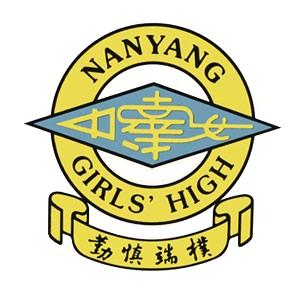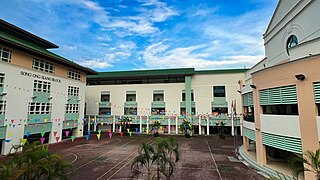
Education in Singapore is managed by the Ministry of Education (MOE). It controls the development and administration of state schools receiving taxpayers' funding, but also has an advisory and supervisory role in respect of private schools. For both private and state schools, there are variations in the extent of autonomy in their curriculum, scope of taxpayers' aid and funding, tuition burden on the students, and admission policy.

Raffles Institution (RI) is an independent educational institution in Singapore. Founded in 1823, it is the oldest school in the country. It provides secondary education for boys only from Year 1 to Year 4, and pre-university education for both boys and girls in Year 5 and Year 6. Since 2007, RI and its affiliated school Raffles Girls' School have been offering the six-year Raffles Programme, which allows students to skip the Singapore-Cambridge GCE O-Level examinations and proceed to take the Singapore-Cambridge GCE A-Level examinations at the end of Year 6.

The Chinese High School was an independent school in Singapore offering secondary education. The school merged with Hwa Chong Junior College on 1 January 2005 to form the integrated Hwa Chong Institution.

The Hwa Chong Junior College was a junior college in Singapore offering pre-university education. The school merged with The Chinese High School on 1 January 2005 to form the integrated Hwa Chong Institution.
The Gifted Education Programme (GEP) is an academic programme in Singapore, initially designed to identify the top 0.25% of students from each academic year with outstanding intelligence. The tests are based on verbal, mathematical and spatial abilities. Selected students will then be transferred to schools offering the GEP. GEP classes are designed to fit the students' learning ability, and may cover subjects in greater breadth and depth. The curriculum is designed by the Gifted Education Branch and eschews the use of textbooks for notes that have been prepared by GEP teachers. The programme has now been expanded to 1% of the students from each academic year.

Hwa Chong Institution (HCI) is an independent secondary educational institution in Bukit Timah, Central Region, Singapore. It was established in 2005 by the merger of The Chinese High School (1919–2004) and Hwa Chong Junior College (1974–2005).

Catholic High School (CHS) is a government-aided autonomous Catholic boys' school in Bishan, Singapore, founded in 1935 by a French missionary, Reverend Father Edward Becheras. One of the Special Assistance Plan schools in Singapore, it has a primary section offering a six-year programme and a secondary section offering a four-year programme. Since 2013, it has partnered with Eunoia Junior College for a six-year Integrated Programme, which allows its secondary students to proceed to Eunoia for Years 5 and 6 and take the Singapore-Cambridge GCE Advanced Level examinations at the end of Year 6.

Nanyang Girls' High School (NYGH) is an independent girls' secondary school in Bukit Timah, Singapore. Founded in 1917, it is one of the oldest schools in the country. NYGH offers a six-year Integrated Programme, which allows students to skip the Singapore-Cambridge GCE Ordinary Level examinations and proceed to take the Singapore-Cambridge GCE Advanced Level examinations at the end of Year 6. Students would study in NYGH from Years 1 through 4, before proceeding to the College section of Hwa Chong Institution in Years 5 and 6.

Dunman High School (DHS) is a co-educational government autonomous secondary school located in Kallang, Singapore, offering the Integrated Programme and the Special Assistance Plan (SAP). It was originally located in West Kallang.

River Valley High School (RVHS) is a co-educational government autonomous secondary school in Boon Lay, Singapore. Founded in 1956 and originally located in River Valley, it is one of the Special Assistance Plan schools designated by the Ministry of Education in recognition of its heritage and excellence in education. Since 2006, the school has been running a six-year Integrated Programme that allows students to skip the Singapore-Cambridge GCE Ordinary Level examinations and proceed to sit for the Singapore-Cambridge GCE Advanced Level examinations at the end of Year 6.

Singapore Chinese Girls' School (SCGS) is an independent girls' school in Bukit Timah, Singapore, located opposite Stevens MRT station. Founded in 1899, it is one of the oldest institutions in Singapore. It offers a six-year primary education in its primary school section, as well as a four-year secondary education in its secondary school section, which was among the first secondary schools in Singapore to be accorded independent school status in 1989. Since 2013, it has partnered with Eunoia Junior College for a six-year Integrated Programme, which allows its secondary school students to proceed to Eunoia Junior College for Years 5 and 6 and take the Singapore-Cambridge GCE Advanced Level examinations at the end of Year 6.

St. Joseph's Institution (SJI) is an independent Catholic educational institution in Singapore. Founded in 1852 by the De La Salle Brothers, it is the first Catholic school and the third oldest school in the country.

CHIJ St. Nicholas Girls' School (SNGS) is a government-aided autonomous Catholic girls' school in Ang Mo Kio, Singapore. The school is one of 11 Convent of the Holy Infant Jesus (CHIJ) schools in Singapore and one of the designated Special Assistance Plan (SAP) schools. It offers a six-year primary education in its primary school section and a four-year secondary education in its secondary school section. Since 2013, it has partnered with Eunoia Junior College for a six-year Integrated Programme, which allows its secondary school students to skip the Singapore-Cambridge GCE Ordinary Level examinations and proceed to Eunoia for Years 5 and 6 and take the Singapore-Cambridge GCE Advanced Level examinations at the end of Year 6.
Singapore's grading system in schools is differentiated by the existence of many types of institutions with different education foci and systems. The grading systems that are used at Primary, Secondary, and Junior College levels are the most fundamental to the local education system,
Junior colleges (JC) are pre-university institutions in Singapore that offer two-year pre-university courses that leads to either the Singapore-Cambridge GCE Advanced Level (A-Level) or the International Baccalaureate Diploma. Admission to junior college is based on attaining an aggregate raw score of 20 points or less in the O-Level examination.
Direct School Admission (DSA) is a scheme in Singapore introduced in 2004 that allows students to be recognised for their strengths in specific talent areas, such as sports, performing arts, or leadership, alongside their academic performance. The scheme enabled students to secure early admission to schools of their choice. For students entering secondary school in 2005, the scheme was categorised as DSA-Secondary (DSA-Sec), primarily for those applying to the Integrated Programme (IP). In 2005, the Ministry of Education (MOE) extended the scheme to include students seeking direct admissions into junior college, categorising it as DSA-Junior College (DSA-JC).

Secondary education in Singapore is largely public, and is compulsory until a child has reached 16 years of age. At the end of public primary education, Singapore students take the Primary School Leaving Examination (PSLE) and are placed into the different streams and secondary schools based on their results. There are three main public secondary education streams: Express (E)(Currently known as G3), Normal (Academic), and Normal (Technical), with special and private education courses also being available. The Express stream has a more stringent cut-off than the Normal (Academic) stream, which is in turn more selective than the Normal (Technical) stream. Secondary students can move between streams based on their academic performance.

Eunoia Junior College (EJC) is a junior college in Singapore which offers Integrated Programme (IP) with Catholic High School, Singapore Chinese Girls' School and CHIJ Saint Nicholas Girls' School. It is located in Bishan, close to Bright Hill MRT station and Bishan MRT station.
The Art Elective Program (AEP) is offered by schools in Singapore that have obtained permission from the Ministry of Education. This programme is also known as Higher Art and can also be offered as a Singapore-Cambridge General Certificate of Education Ordinary Level (O-level) subject.
















